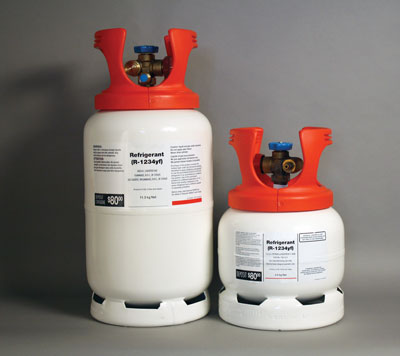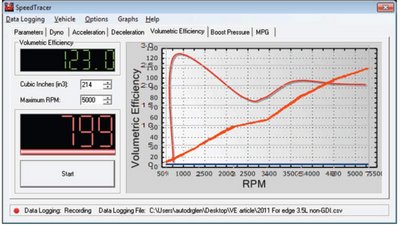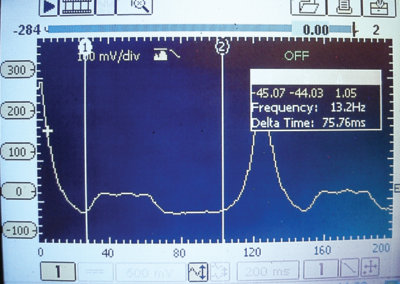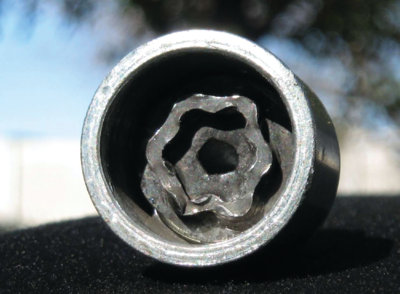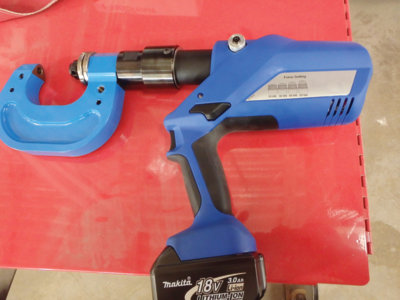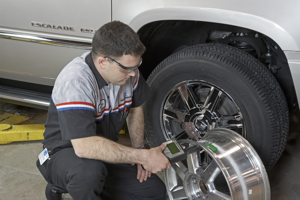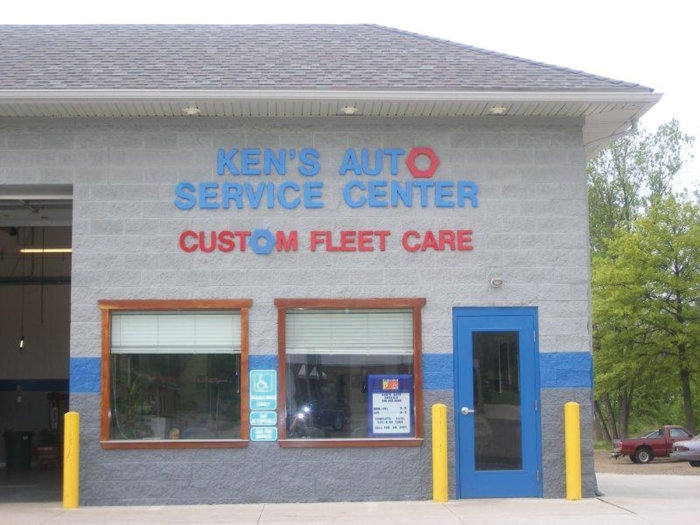A Few Cost-Effective Updates Will Make a Big Difference to Your
Technicians and Customers
First impressions are everything, especially when it comes to new customers. The appearance of your shop is not only important to your customers, but it’s where your techs spend most of their time. If you want to make those two groups of people happy, read on. If you’re looking for a cost-effective way to give your shop a boost in the appearance department, here is my recommendation: Walk out into your shop and look up. What color is your ceiling? What type of lights do you have?
STEP 1: PAINTING
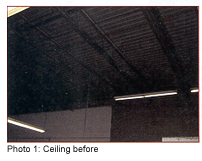 A lot of shops have unpainted ceilings (see Photo 1) and fluorescent lights. If you want to get a good bang for your buck, schedule a long weekend of no car repairs and cover everything in the shop with plastic. Talk to your neighborhood paint supplier and purchase some oil-based, white urethane paint. He can tell you approximately how many gallons you will need. Rent a sprayer and buy a paint suit, hooded mask, respirator and gloves. Next you are going to need a roll-around scaffolding to get up to the ceiling. Spraying is a fairly easy job that pays off with huge results.
A lot of shops have unpainted ceilings (see Photo 1) and fluorescent lights. If you want to get a good bang for your buck, schedule a long weekend of no car repairs and cover everything in the shop with plastic. Talk to your neighborhood paint supplier and purchase some oil-based, white urethane paint. He can tell you approximately how many gallons you will need. Rent a sprayer and buy a paint suit, hooded mask, respirator and gloves. Next you are going to need a roll-around scaffolding to get up to the ceiling. Spraying is a fairly easy job that pays off with huge results.
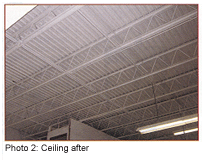 After the painting is done (see Photo 2), dispose of or store the plastic and tarps, clean the sprayer out with paint thinner and return it. You have now provided a clean, white general appearance, which has added a new brightness to your shop.
After the painting is done (see Photo 2), dispose of or store the plastic and tarps, clean the sprayer out with paint thinner and return it. You have now provided a clean, white general appearance, which has added a new brightness to your shop.
STEP 2: LIGHTING
The next step is lighting. Talk to an electrical supply house about purchasing some 250-watt metal halide light fixtures (they are also called H.I.D. lamps or high intensity discharge lamps). They have been used at car dealerships for about the last five years and have grown in popularity as the most cost-effective upgrade to fluorescent lights in commercial use. And, in fact, HID lamps produce more light. They are called metal halide because of the way the lamp is manufactured. It has a sack called an arc tube that houses metal halide and mercury vapors, and when electricity is applied, light is produced by the radiation of the metal halide.
The lights we installed cost about $135 a fixture and include the lamp (bulb). Bulb replacements cost around $22. An electrician installed our lights, which took about a day and cost $400.
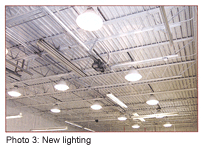 We had these lights installed from the ceiling at about 16 feet and spaced them about every 12 feet (see Photo 3). Estimate approximately how many lights you would need based on the size of your shop. After our lights were installed and turned on, I knew that it was money well spent. The whole shop took on a new appearance that was greatly appreciated by the techs, who could now do their jobs better and easier.
We had these lights installed from the ceiling at about 16 feet and spaced them about every 12 feet (see Photo 3). Estimate approximately how many lights you would need based on the size of your shop. After our lights were installed and turned on, I knew that it was money well spent. The whole shop took on a new appearance that was greatly appreciated by the techs, who could now do their jobs better and easier.
THE BENEFITS
Now let’s talk about the advantages. Based on my experience, when a new customer is escorted back into the bays to show him needed repairs, shop appearance and lighting become a big factor in their developing a trust in us and our ability to complete the repair. When we look professional, organized and knowledgeable, customers are impressed and more likely to want us to service their vehicle. If your shop is a dark dungeon, it will affect your sales as well as your employee morale and retention. Employees want to be proud of where they work, and a clean, organized, well-lit shop is the first step in providing that professional appearance we all want.


